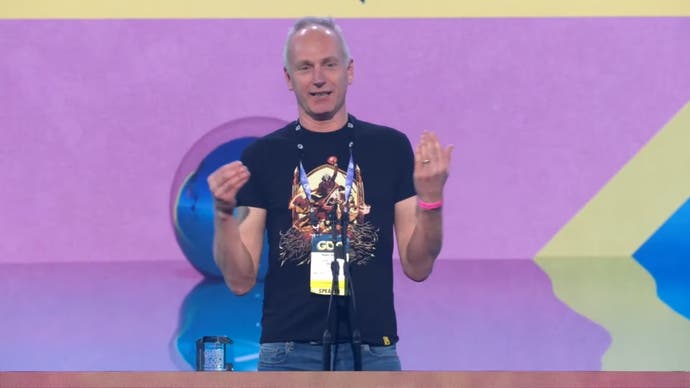[ad_1]
The day the 3DS and WiiU eShop closed was a bitter one for me. For ages I’d been hovering over the trigger for Ace Attorney 5 and 6 (or Phoenix Wright: Ace Attorney – Dual Destinies and Phoenix Wright: Ace Attorney – Spirit of Justice, to give them their full titles), hoping they’d go on a decent sale, only to miss them altogether when the eShop closed.
I had previously played Ace Attorney 4 (Apollo Justice: Ace Attorney), which was released in Europe in 2008 on the DS, but I missed out on the other two in the trilogy. Both were released on 3DS, in 2013 and 2016 respectively, but I didn’t get a 3DS until it was too late. By that time, it wasn’t easy to buy a physical copy of Dual Destinies easily, and Spirit of Justice was only available digitally outside of Japan. The two have been made available on mobile at different times over the years, but with the closure of the eShop, there went my dreams of being able to legally own and play the rest of the Ace Attorney series in their rightful homes on console.
Enter Apollo Justice: Ace Attorney Trilogy, another collection from Capcom which bundles together Ace Attorney 4, 5, and 6. I’ve been looking forward to it since its announcement, and now that I’ve been able to play it I can say my excitement was well-placed. I’m thrilled to see the lesser celebrated games in a series I love getting the treatment they deserve – resurrected, revamped, and ram-packed with bonus goodies. It’s a golden standard for what I think a remaster should be and everything a fan could hope for.
Gameplay-wise, at least for Apollo Justice, everything here remains mostly the same, barring a few 3DS-specific gimmicks. If you enjoyed things like blowing into the microphone to remove excess fingerprint dust, you’ll be sad to hear it’s been replaced with a simple button press in the trilogy. Thankfully, however, the script for Dual Destinies is the same one from the mobile version, which cleaned up the messy English localisation of the original release.
Where Apollo Justice: Ace Attorney Trilogy really shines is in its modernisation and small but impactful usability improvements. Apollo Justice has been given a number of features which later games introduced, including the option to see a recent history of dialogue (something I wish all developers would put in their visual novels), and episode and chapter selection which allow you to jump into cases from specific points.
However, Capcom has gone one step further and added what’s possibly my favourite feature now – the option to hide the UI. By pressing ZL on Switch, the text box completely disappears, letting you look at the background. More importantly, if a character is in shot they’ll continue to loop in their animation, letting you get a good look at it unimpeded. This is the first time this has been possible in the games, and the absence of the feature until now is why fan sites like court-records.net exist. Now, you can marvel at the witnesses sweating bullets when you rip into their testimonies (or the protagonists, as things appear to be going south for their case).

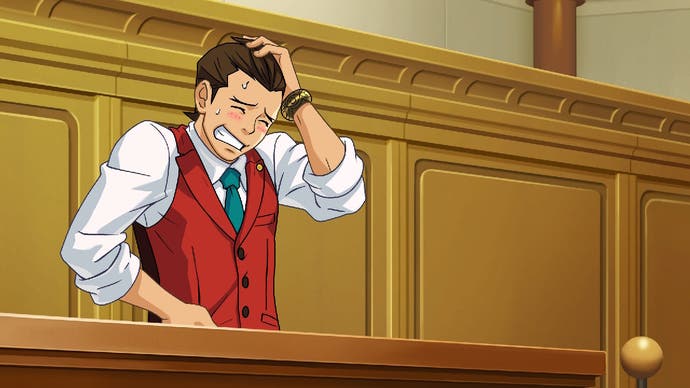

Capcom clearly knows what fans want, as its added an Animation Studio feature which allows you to play different animations on different artwork. You can’t seem to go fully off the rails, as not every background can be used with every character, but this is hardly a problem for fans who are willing to go the extra mile with their creativity. Capcom has provided green, blue, and black screens for anyone who wants to flex their video editing skills.
Animations from each of the games included in the trilogy are available, along with any alternative character outfits. You can add any of the defence counsel or prosecutors shouting “Objection!”, which splashes the iconic speech bubble onto the screen. There’s so much variety in what you can put together and therefore so much potential for fans to go wild. I can already imagine the skits that people will be making and sharing on YouTube and TikTok.
For players who’d rather sit back and take the games in, Autoplay Mode and Story Mode both return from The Great Ace Attorney Chronicles. Autoplay Mode automatically advances the text, and, in addition to that, Story Mode automatically solves the puzzles. I’ve found Story Mode really useful for moments when I’m not sure which exact piece of evidence I need to present during witness testimonies and I’m too lazy to exhaust all my options or look up a walkthrough. In future, I can see myself using it to revisit the games to experience the story again in a cinematic way. I’ve used the anime adaptation to do this before for the first three games, but that doesn’t make for quite as nostalgic viewing.
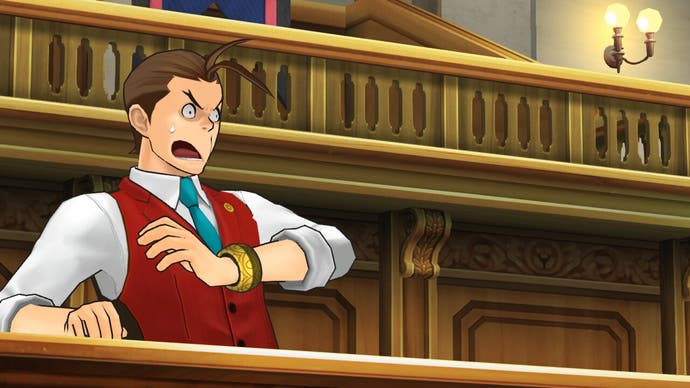
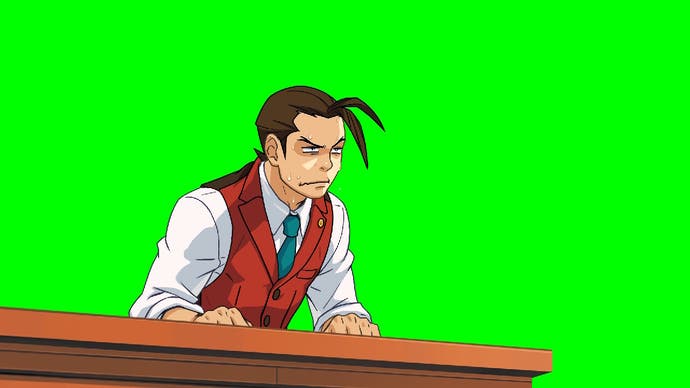

Having (admittedly) spent a lot of time poking around the Animation Studio, I’ve come to appreciate the higher resolution artwork used in Apollo Justice as it makes the character animations look much smoother than I remember. Personally, I was never a fan of the 3D style adopted for Dual Destinies and Spirit of Justice, but the dramatic and over-the-top nature of animations has been drawn out well.
So far, I’ve been replaying through Apollo Justice since it’s been so long since I last played it. I’m falling in love with the characters all over again as they navigate the twists and turns of each case. Unfortunately this also meant I re-encountered Director Hotti, or Hickfield/whichever clinic he now resides at in canon, and I had to sit through him creeping on teenage Trucy Wright. This was really a cameo I could have done without, but there’s no massive revisions to be expected within the remastered collection. Instead, Capcom opts for a disclaimer on launch: “Some of the contents of the games in this collection are presented as initially released to preserve the games as originally created.”
In a way, I think that’s both the best thing Capcom could offer, and the least it should offer with Apollo Justice: Ace Attorney Trilogy. With access to the original so difficult and expensive today now the eShop is no more (especially Spirit of Justice), and mobile app stores so famously flaky for delisting games or dropping support on older phones, I’m glad to see them accessible on contemporary platforms. At the same time, access to these games is something which should have always been available, and Apollo Justice: Ace Attorney Trilogy is as much a reminder of the infamous state of game preservation as it is a solution to it.
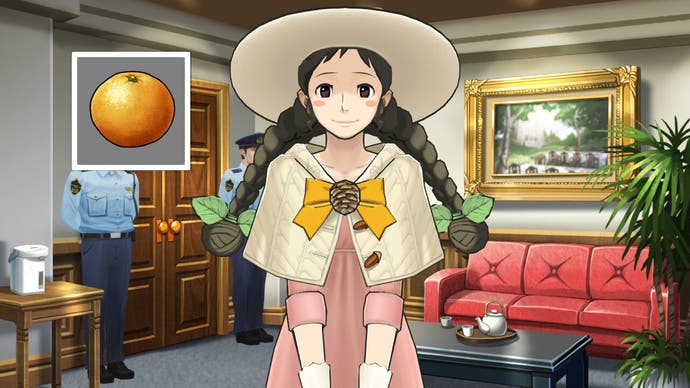
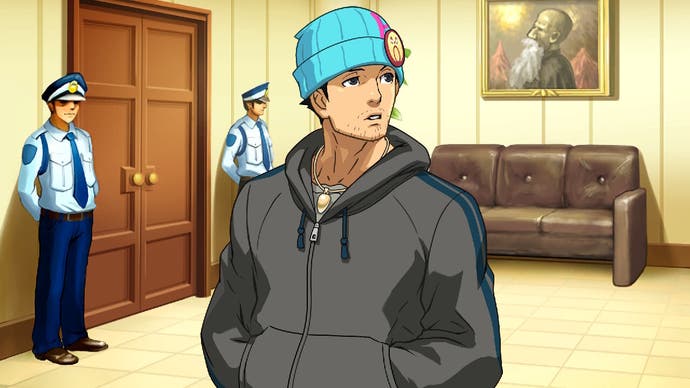
There will undoubtedly be people who were introduced to Ace Attorney through the Phoenix Wright trilogy or The Great Ace Attorney Chronicles and fans who’d like to own the later games in the series on modern consoles, and for those people Apollo Justice: Ace Attorney Trilogy, with its updated UI and graphics, user-friendly tweaks and inclusion DLC is in many ways the complete package.
For me, a person who is wholeheartedly a hardcore Ace Attorney fan, this collection is magical. The draw of being able to see character animations clearly during the game is a delight. The Animation Studio gives fans the resources to make edits on a scale which wasn’t really possible before, and far more easily with the 3D models from Dual Destinies and Spirit of Justice. It’s pure fan service, endless fun, and a feature I wish was included in the previous collections.
Most important of all, more Ace Attorney games are now available to fans and future generations to discover. (Even more importantly to me, it gives me renewed hope for a remaster collection of the Ace Attorney Investigations games next. Although if it doesn’t include an easy way to extract models of Edgeworth running to use in edits, I’m taking Capcom to court.)
A copy of Apollo Justice: Ace Attorney Trilogy was provided by Capcom.
[ad_2]
Source link



